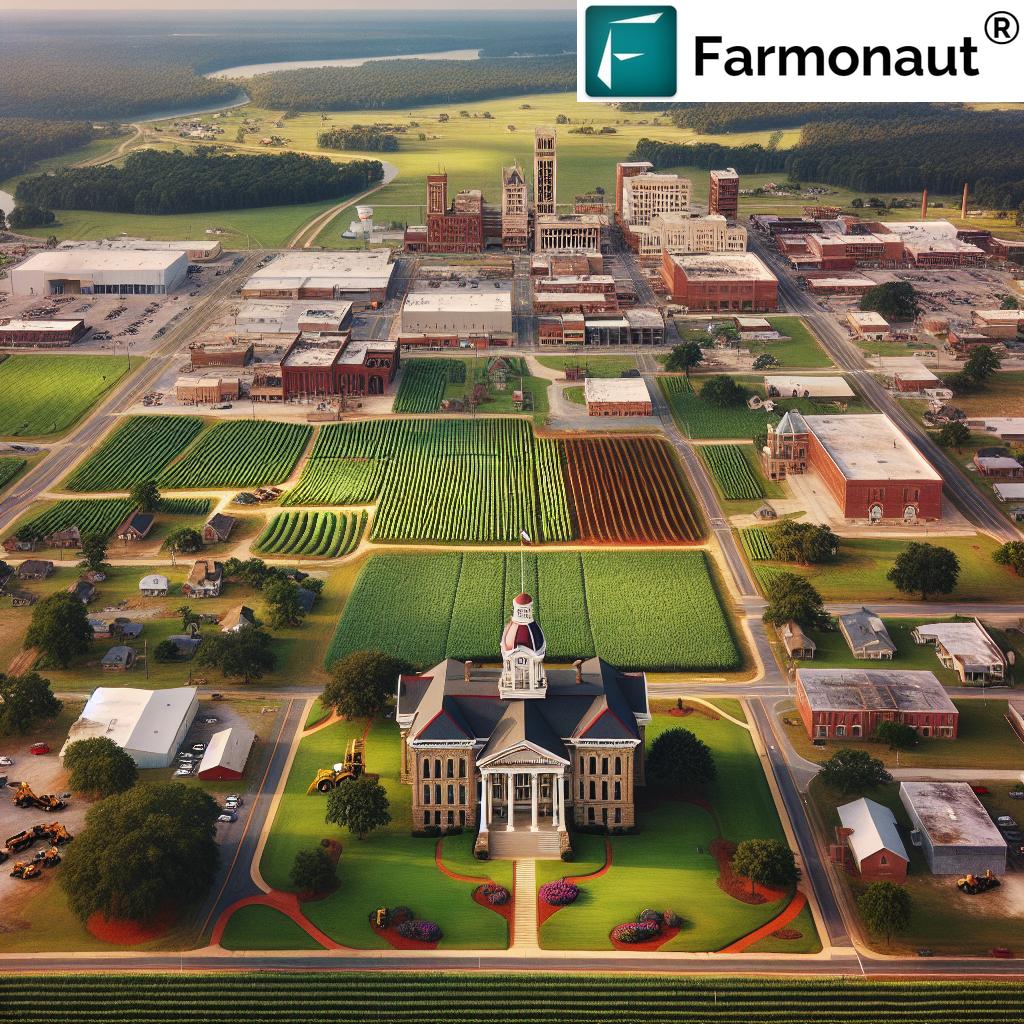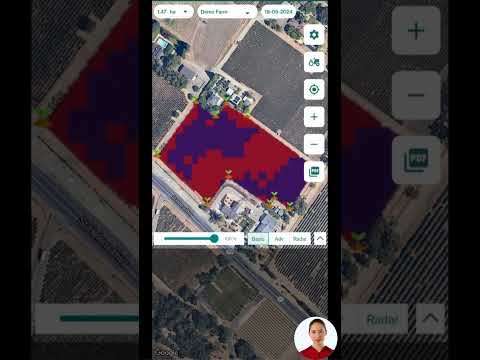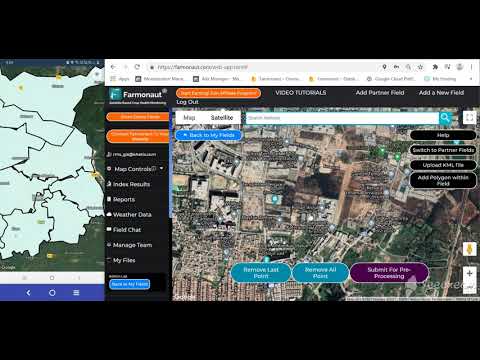Lowndes County, Georgia: 200 Years of Agricultural Legacy and Economic Growth in Rural South
“Lowndes County, Georgia, has grown from its 1825 founding to a population of over 118,000 in less than 200 years.”
As we approach the bicentennial celebration of Lowndes County, Georgia, we find ourselves reflecting on an incredible journey of growth, resilience, and progress. From its humble beginnings as a rural outpost in South Georgia to its current status as an economic powerhouse, Lowndes County has woven a rich tapestry of history that continues to inspire and shape its future. In this comprehensive exploration, we’ll delve into the county’s agricultural roots, its economic evolution, and the vibrant community that has flourished over two centuries.
The Birth of a County: Laying the Foundation
Our story begins in 1825 when Lowndes County was officially established, carving out its place in the heart of South Georgia. Named after William Jones Lowndes, a prominent South Carolina statesman, the county was born into a world of agrarian promise and frontier spirit. Let’s take a closer look at the early years that shaped this remarkable community:
- 1828: Franklinville becomes the first county seat, marking the beginning of local governance and community organization.
- 1837: The county seat moves to Troupville, reflecting the shifting dynamics of population and commerce in the region.
- 1859: The arrival of the railroad industry puts Valdosta on the map, setting the stage for unprecedented growth and economic development.
These early milestones laid the groundwork for what would become a thriving center of agriculture, commerce, and culture in South Georgia. The establishment of key infrastructure and the strategic location of Lowndes County positioned it for success in the years to come.
Agricultural Roots: The Backbone of Lowndes County
From its inception, agriculture has been the lifeblood of Lowndes County. The fertile soils and favorable climate of South Georgia provided the perfect conditions for a diverse range of crops and livestock. As we trace the agricultural legacy of the county, we see a story of innovation, adaptation, and perseverance:
- Cotton Kingdom: In the 19th century, cotton reigned supreme, with Lowndes County farmers contributing to the broader economic landscape of the American South.
- Diversification: As markets evolved, so did the agricultural practices in the county. Farmers began experimenting with new crops such as tobacco, peanuts, and pecans, showcasing their ability to adapt to changing economic conditions.
- Technological Advancements: The 20th century brought significant technological improvements to farming in Lowndes County. From mechanization to irrigation systems, local farmers embraced innovation to increase productivity and efficiency.
Today, agriculture remains a cornerstone of Lowndes County’s economy, with modern farmers utilizing cutting-edge technologies to maximize yields and sustainability. For instance, many local farmers are now leveraging satellite-based farm management solutions like those offered by Farmonaut to monitor crop health, optimize resource usage, and make data-driven decisions.
The Railroad Revolution: Valdosta’s Rise to Prominence
The year 1859 marked a turning point in Lowndes County’s history with the arrival of the railroad. This development not only transformed the local economy but also shifted the center of gravity within the county. Here’s how the railroad influenced Lowndes County’s growth:
- Economic Catalyst: The railroad provided faster and more efficient transportation for agricultural products, opening up new markets for Lowndes County farmers.
- Urban Development: Valdosta, strategically located along the railway, quickly grew into the county’s economic and cultural hub, eventually becoming the new county seat.
- Industrial Growth: The improved transportation infrastructure attracted new industries to the area, diversifying the local economy beyond agriculture.
The impact of the railroad on Lowndes County cannot be overstated. It set the stage for a century of growth and development, transforming a rural agricultural community into a thriving regional center.
A Century of Progress: 1900-2000
The 20th century brought both challenges and opportunities to Lowndes County. From world wars to economic depressions, the community faced each obstacle with determination and ingenuity. Let’s explore some key developments during this transformative period:
- Educational Advancements: The establishment of Valdosta State University (originally South Georgia State Normal College) in 1906 brought higher education opportunities to the region.
- Military Presence: The creation of Moody Air Force Base during World War II not only contributed to national defense but also became a significant economic driver for the county.
- Civil Rights Movement: Lowndes County played its part in the struggle for equality, with local leaders and community members working towards social justice and integration.
- Economic Diversification: While agriculture remained important, the county saw growth in manufacturing, healthcare, and service industries, creating a more robust and resilient economy.
Throughout these decades, Lowndes County continued to evolve, balancing its rich agricultural heritage with the demands of a modernizing world. The community’s ability to adapt and grow in the face of change set the stage for its current status as a regional economic powerhouse.

The New Millennium: Challenges and Triumphs
As Lowndes County entered the 21st century, it faced new challenges while capitalizing on emerging opportunities. The community’s resilience and forward-thinking approach have been put to the test in recent years:
- Natural Disasters: Hurricanes Helene and Idalia, along with Tropical Storm Debby and severe straight-line winds, have caused significant damage to the county. However, each time, the community has come together to rebuild and recover.
- Economic Development: Lowndes County has continued to attract new businesses and industries, leveraging its strategic location and skilled workforce to drive economic growth.
- Population Growth: With over 118,000 residents as of recent counts, the county has seen substantial population growth, bringing both opportunities and challenges in terms of infrastructure and services.
- Technological Advancements: The adoption of new technologies, particularly in agriculture and industry, has helped Lowndes County maintain its competitive edge in the global economy.
One area where technology has made a significant impact is in agricultural management. For instance, Farmonaut’s crop plantation and forest advisory services have helped local farmers optimize their operations, improve crop yields, and manage resources more efficiently. This blend of traditional farming knowledge with cutting-edge technology exemplifies Lowndes County’s approach to growth and development.
“The historic courthouse in Lowndes County was once so popular for weddings that it hosted up to 20 ceremonies daily.”
The Historic Courthouse: A Symbol of Continuity and Change
At the heart of Lowndes County’s story stands the historic courthouse, a testament to the community’s enduring spirit and evolving identity. This iconic structure has played various roles throughout the county’s history:
- Center of Governance: For decades, the courthouse served as the hub of county administration and legal proceedings.
- Wedding Destination: Known as the first courthouse off I-75 where young couples could get married, it became a popular spot for weddings, hosting up to 20 ceremonies a day at its peak.
- Cultural Landmark: Today, the historic courthouse stands as a symbol of Lowndes County’s rich heritage, attracting visitors and serving as a focal point for community events.
Jessica Ganas, Lowndes County Historic Courthouse Facility and Marketing Coordinator, reflects on the building’s significance: “The growth here, obviously with our population in Lowndes County, has changed a lot for us. You know, we outgrew this courthouse by the 1950s. We were able to extend the use through the annex. Our historic downtown has remained the same as far as the buildings, but it’s just changed a lot through the years.”
The courthouse’s evolution mirrors that of Lowndes County itself – adapting to new needs while preserving the essence of its history and character.
Economic Diversification: Beyond Agriculture
While agriculture remains a crucial part of Lowndes County’s economy, the region has successfully diversified its economic base over the years. This diversification has been key to the county’s resilience and continued growth. Let’s explore some of the industries that now contribute to Lowndes County’s economic landscape:
- Healthcare: With the expansion of South Georgia Medical Center and the growth of various medical practices, healthcare has become a significant employer and economic driver in the county.
- Education: Valdosta State University and other educational institutions not only provide employment but also contribute to workforce development and attract talent to the region.
- Manufacturing: Companies in sectors ranging from food processing to aerospace components have established operations in Lowndes County, taking advantage of its strategic location and business-friendly environment.
- Retail and Services: The growth of Valdosta as a regional hub has led to a thriving retail and service sector, serving both local residents and visitors from surrounding areas.
- Technology: Emerging tech companies and startups are finding a home in Lowndes County, attracted by the quality of life and growing support for innovation.
This economic diversification has not only created new job opportunities but has also helped to insulate the county from economic downturns that might disproportionately affect any single industry. For instance, the adoption of technologies like Farmonaut’s fleet management solutions has helped local businesses optimize their operations and stay competitive in an increasingly digital world.
Community Resilience: Weathering Storms Together
Recent years have brought significant challenges to Lowndes County, particularly in the form of natural disasters. The community’s response to these events showcases the resilience and unity that have been hallmarks of the county throughout its history:
- Hurricane Recovery: In the wake of Hurricanes Helene and Idalia, residents came together to support one another, clear debris, and rebuild damaged infrastructure.
- Tropical Storm Preparedness: Lessons learned from events like Tropical Storm Debby have led to improved emergency response plans and community preparedness initiatives.
- Economic Resilience: The diversified economy has helped the county bounce back more quickly from natural disasters and economic setbacks.
Lowndes County Manager Paige Dukes reflects on this resilience: “Over the last 200 years, we had a very small group of community leaders come together, and we were literally a map dot in rural South Georgia. Today, we are an economic engine, a powerhouse for this part of the state.”
This ability to come together in times of crisis and emerge stronger is a testament to the spirit of Lowndes County and its residents.

Looking to the Future: The Next 200 Years
As Lowndes County approaches its bicentennial, community leaders and residents are not just celebrating the past but actively planning for the future. Here are some key areas of focus as the county looks ahead:
- Sustainable Development: Balancing economic growth with environmental stewardship is a priority, with initiatives aimed at preserving natural resources and promoting sustainable practices.
- Technology Integration: Continued adoption of advanced technologies, particularly in agriculture and industry, will be crucial for maintaining competitiveness. Tools like Farmonaut’s carbon footprinting solutions can help local businesses monitor and reduce their environmental impact.
- Education and Workforce Development: Investing in education and skills training to prepare residents for the jobs of the future is a key focus for community leaders.
- Infrastructure Improvements: Ongoing projects to upgrade roads, utilities, and digital infrastructure aim to support continued growth and improve quality of life for residents.
- Cultural Preservation: Efforts to maintain the county’s rich cultural heritage while embracing diversity and inclusivity are shaping the community’s future identity.
Paige Dukes expresses optimism about the county’s future: “The future is so bright, and I think all eyes are really focused on moving towards a better community for our citizens here — Continuing to grow Lowndes County in a way that protects who we are fundamentally but also provides a place for everyone.”
Celebrating 200 Years: A Community United
As Lowndes County prepares to mark its bicentennial on December 23, 2025, the community is coming together to celebrate its rich history and bright future. A calendar of events leading up to the 200th birthday showcases the pride and unity of Lowndes County residents:
- Historical Exhibitions: Displays and presentations highlighting key moments in the county’s 200-year journey.
- Community Festivals: Celebrations that bring together residents of all ages to honor the county’s diverse heritage.
- Educational Programs: Initiatives to engage students and young people in learning about and contributing to the county’s history.
- Economic Forums: Discussions and workshops focused on the future of Lowndes County’s economy and development.
These events not only commemorate the past but also serve to strengthen community bonds and inspire future generations. As Paige Dukes notes, “Everyone loves a party, right? And I can’t think of anyone who deserves it more than our community.”
Historical Timeline of Lowndes County, Georgia
| Year | Event | Significance |
|---|---|---|
| 1825 | County establishment | Founding of Lowndes County, marking the beginning of organized local governance |
| 1828 | Franklinville becomes first county seat | Establishment of initial administrative center for the county |
| 1837 | County seat moves to Troupville | Reflects shifting population and economic centers within the county |
| 1859 | Railroad arrives, Valdosta gains prominence | Catalyst for economic growth and urbanization, positioning Valdosta as the new economic hub |
| 1860s-1900s | Agricultural leadership | Lowndes County emerges as a significant agricultural producer in South Georgia |
| 1906 | Establishment of South Georgia State Normal College (now Valdosta State University) | Brings higher education opportunities to the region, enhancing workforce development |
| 1940s | Moody Air Force Base established | Introduces military presence, boosting local economy and population |
| 1950s-1990s | Economic diversification | Growth in manufacturing, healthcare, and service industries alongside agriculture |
| 2000s-present | Technological integration and population growth | Adoption of advanced technologies in agriculture and industry, population surpasses 118,000 |
| 2020s | Hurricane recovery and resilience | Community demonstrates strength in recovering from natural disasters, showcasing adaptability |
| 2025 | Bicentennial celebration | Marks 200 years of growth, progress, and community spirit in Lowndes County |
Conclusion: A Legacy of Growth and Resilience
As we reflect on the 200-year journey of Lowndes County, Georgia, we see a story of transformation, resilience, and community spirit. From its humble beginnings as a rural outpost to its current status as a thriving economic center in South Georgia, Lowndes County has consistently demonstrated an ability to adapt, grow, and overcome challenges.
The agricultural roots that formed the foundation of the county’s economy continue to play a vital role, now enhanced by modern technologies and sustainable practices. The diversification of the economy, the growth of Valdosta as a regional hub, and the community’s unwavering spirit in the face of natural disasters all speak to the strength and character of Lowndes County.
As the county looks forward to its next century, it does so with a sense of optimism and purpose. The blend of historical preservation and forward-thinking development, exemplified by projects like the revitalization of the historic courthouse and the adoption of advanced agricultural technologies, positions Lowndes County for continued success and growth.
In the words of Paige Dukes, “We continue to be a magnet for all things good. Certainly our community has challenges, but the positives outweigh that.” This sentiment captures the essence of Lowndes County – a community that acknowledges its challenges but remains focused on the opportunities and potential that lie ahead.
As Lowndes County celebrates its bicentennial, it does so not just as a commemoration of the past, but as a launching point for the future. The next 200 years promise to be as dynamic and transformative as the last, guided by the same spirit of innovation, resilience, and community that has defined Lowndes County since its founding in 1825.
FAQs About Lowndes County, Georgia
- When was Lowndes County, Georgia founded?
Lowndes County was officially established in 1825. - What is the current population of Lowndes County?
Recent estimates indicate that Lowndes County has over 118,000 residents. - What are the main industries in Lowndes County?
While agriculture remains important, the county’s economy is now diversified, including healthcare, education, manufacturing, retail, and services. - How has Lowndes County dealt with recent natural disasters?
The community has shown remarkable resilience in recovering from hurricanes and tropical storms, with strong community support and improved emergency preparedness. - What role does agriculture play in Lowndes County today?
Agriculture continues to be a significant industry, with modern farmers utilizing advanced technologies to improve productivity and sustainability. - What is the significance of the historic courthouse in Lowndes County?
The historic courthouse has served as a center of governance, a popular wedding venue, and now stands as a symbol of the county’s rich heritage. - How is Lowndes County preparing for its bicentennial celebration?
The county has planned a series of events leading up to December 23, 2025, including historical exhibitions, community festivals, and educational programs. - What are some key challenges facing Lowndes County as it enters its third century?
Balancing economic growth with environmental sustainability, infrastructure development, and workforce preparation for future industries are among the key challenges.
Earn With Farmonaut: Earn 20% recurring commission with Farmonaut’s affiliate program by sharing your promo code and helping farmers save 10%. Onboard 10 Elite farmers monthly to earn a minimum of $148,000 annually—start now and grow your income!
Learn more about Farmonaut’s Affiliate Program
Experience the power of satellite-based farm management with Farmonaut:
For developers interested in integrating Farmonaut’s powerful satellite and weather data into their own applications, check out our API and API Developer Docs.







